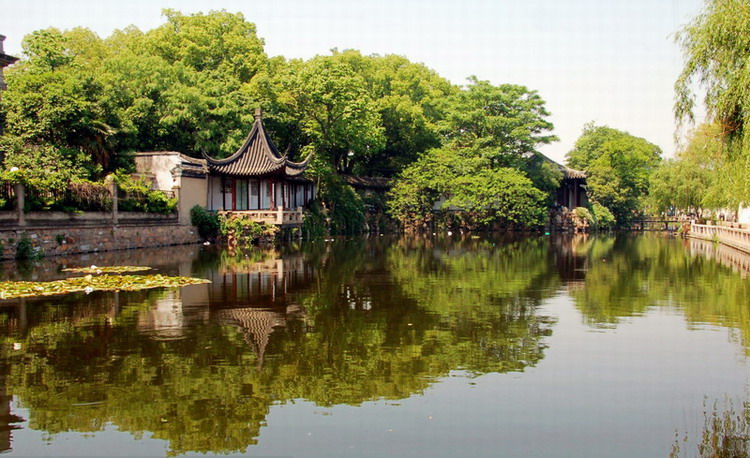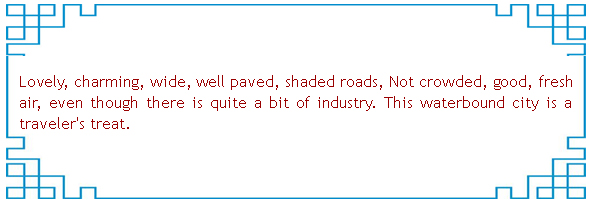|
|
 Author: Sophia Birk
 Author: Ling Yifeng |
What a great place!
Lovely, charming... this waterbound city is a traveler's treat. Wide, well paved, shaded roads, Not crowded, Good, fresh air, even though there is quite a bit of industry. Plenty of public transportation, to include 2 subway lines. There is not a lot of construction. The people,to the extent I was able to interact with them, were very friendly and helpful. Founded in 514 BC, she is the cradle of the Wu ethnicity, and for a long time was the refuge of emigrating North Chinese. Until Shanghai became the city we know her as today, Suzhou was the national economic, commercial and cultural center of China.
One feature that separates Suzhou from the rest of up-and-coming cities in China is the lack of over-development and dizzying skyscrapers. Most likely the soil would not be stable enough to support huge edifices. A large part of the city – you could say its heart is built up on water. Old Town has remained virtually untouched throughout the centuries and it would not be a far stretch to say that the way of life has not changed much, either. While there is electricity in these ancient dwellings and, through open doors I saw some televisions, I did not see any satellite dishes mounted, as one might find elsewhere.
I took my time lingering on the ShanTang walking trail, following the canal from Tiger Hill, home of China's Leaning Pagoda, through Old Town. I was fortunate to have it to myself, save for the residents. For some reason, other sightseers stopped about 100m in, content with visiting an extra attraction when, in fact, that whole trail is dotted with worthy sights: Nanshe Memorial hall, Pufu and Bao'en temples, Mulan and Yanshui pavillions and Guanyin Tower, just to name a few.
Hiking that trail I had the privilege of witnessing daily life: wizened grannies peering out of doorways I would have to duck to get into. Task-bound matrons purposefully striding, mop in hand toward the canal, presumably to rinse it. One delightful old crone, sunning herself in the last of the day's rays, muttering toothlessly and gesturing toward the sky. This sharp-eyed dear had spied kites flying high and wanted to call my attention to them. When I got closer to her I couldn't help but notice she looked like an apple-head carving!
It is China's answer to Venice. There were no streets. Gondoliers paddled around the canals. It was lovely! I kept saying that as we walked through. Although this town is touted as a relic and tourist attraction, and indeed it is a UNESCO heritage site, it is a living village. Each dwelling had a set of steps to access the water, making it easier for the women to wash clothes, and rinse mops and pails in the canal. However, almost all of the gondolas I saw were ferrying tourists. Did people have their own gondola? It seemed most natives got around on the walkways, leaving the water to the tourists.
Unfortunately, Zhou Zhuang's trade is tourism. It is such a shame that nearly all of the old buildings had been converted to restaurants, coffee houses and shops selling kitsch. Shiny wooden gondolas ferried tourists all around. Some of the gondoliers, mostly women, treated their passengers to ancient, traditional songs as they paddled along. It was a lovely scene, but undeniably a tourist experience.
 |
|
Linshui Pavilion, part of the Canglangting Pavilion scenic spot, is seen in the south of Suzhou, east China's Jiangsu province. The spot was first built in the Song Dynasty(960-1279) and is the oldest among the 60 plus well-preserved gardens of Suzhou.[Photo/IC] |











